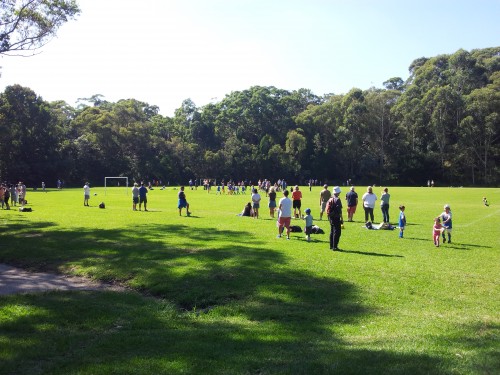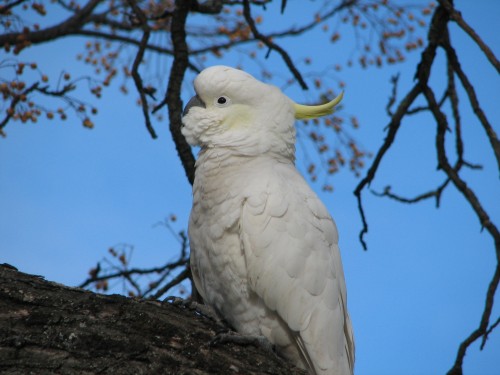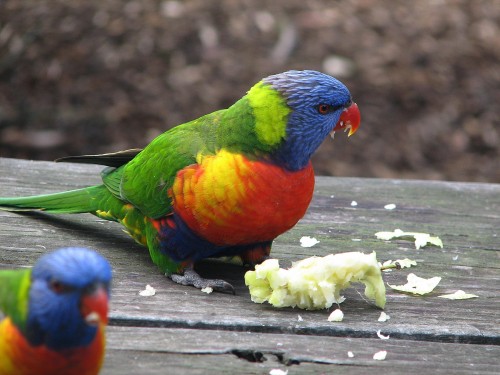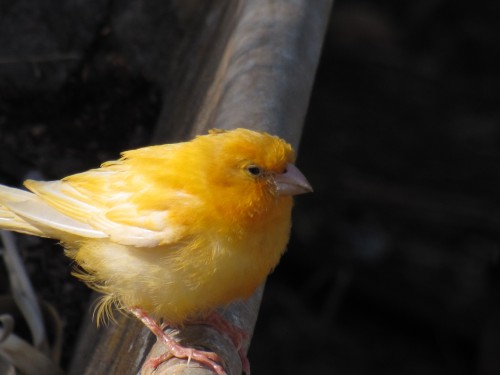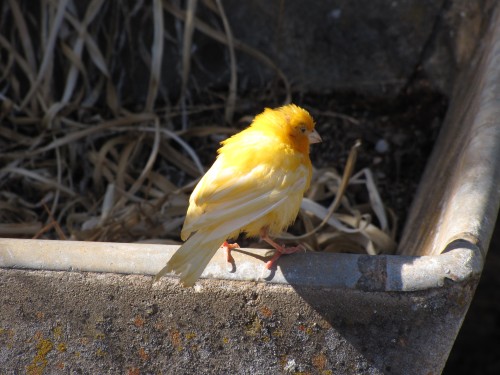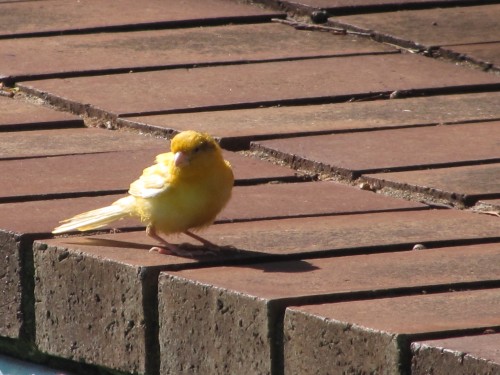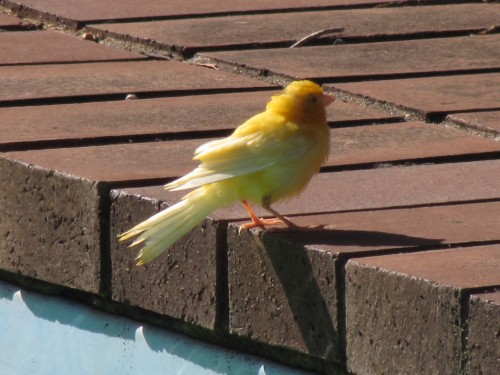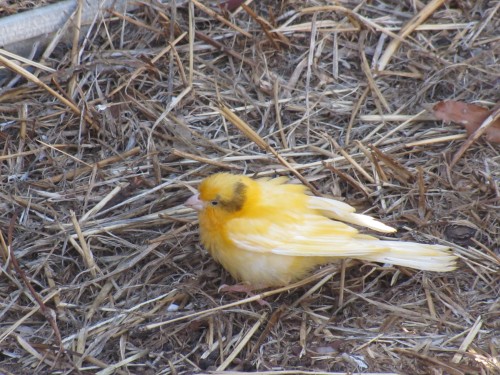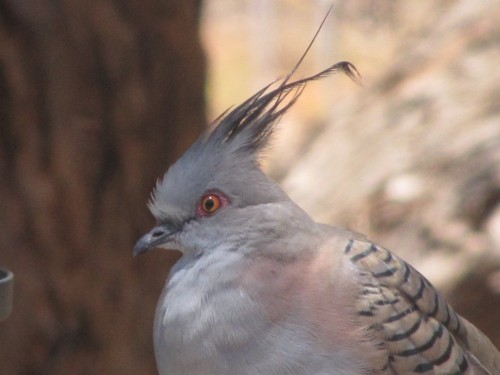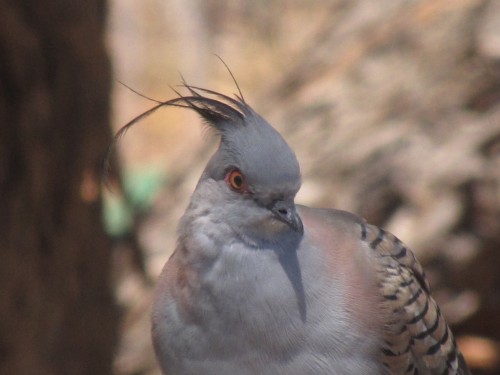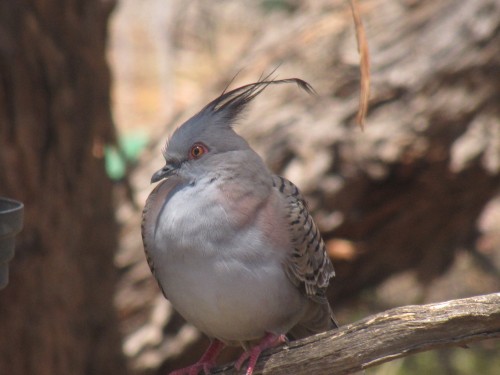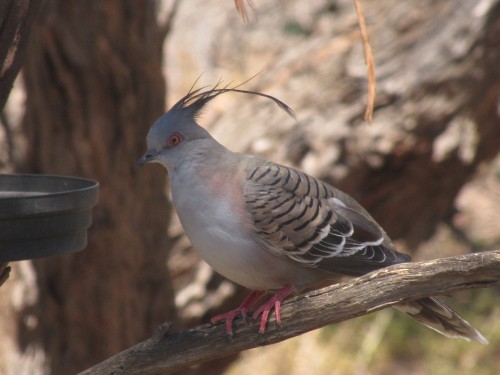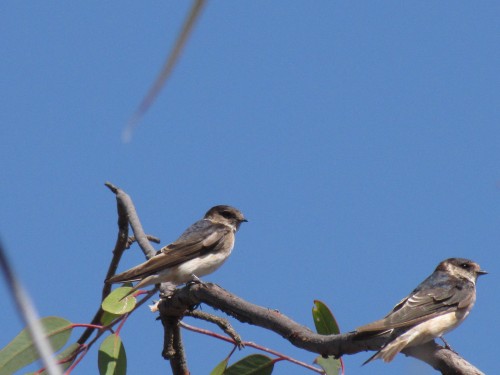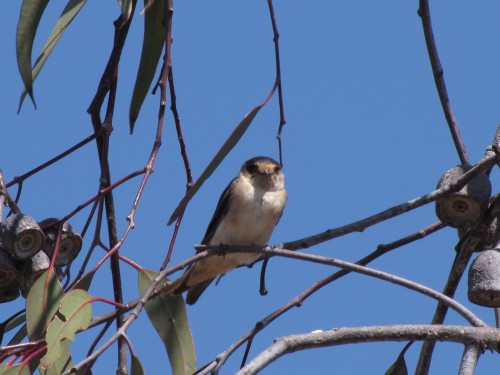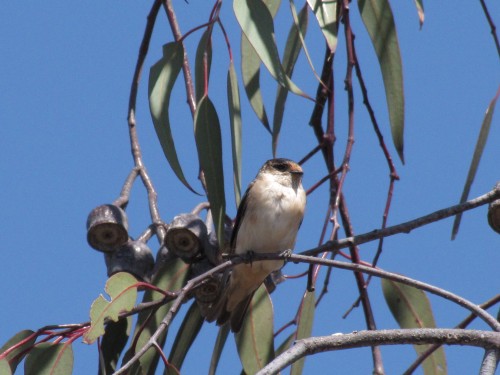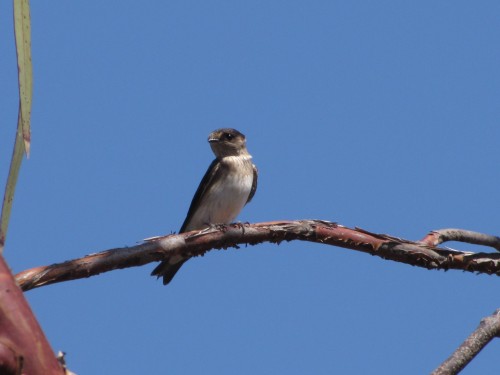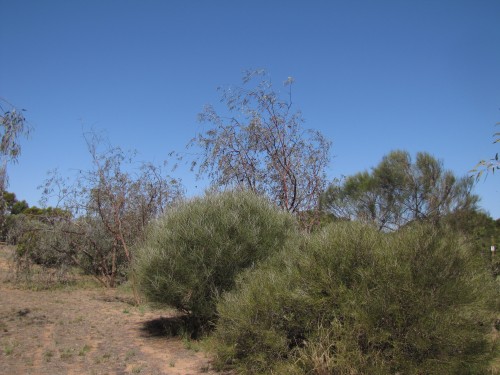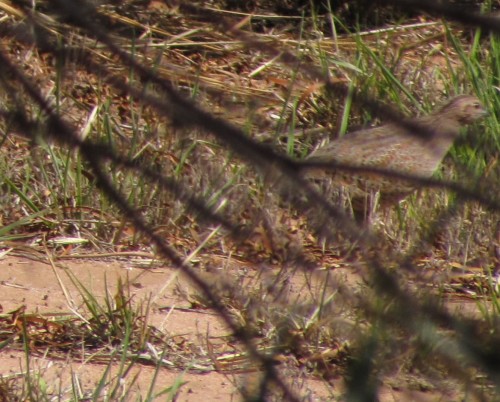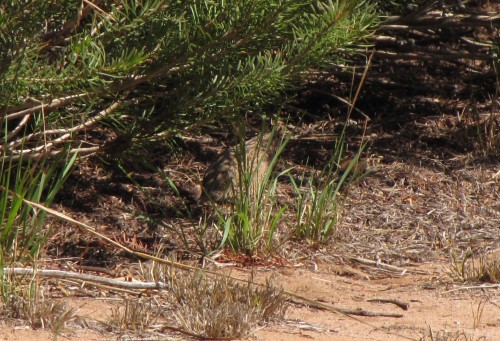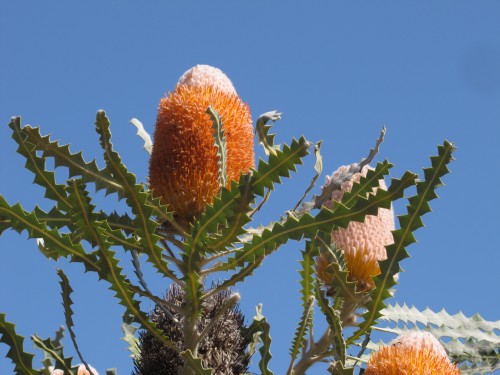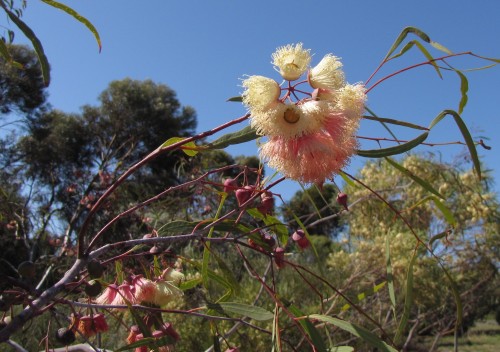A little birding at soccer
We are currently staying with our son and his family in Artarmon, a suburb of Sydney. We try to get over here from Murray Bridge where we live at least once and preferably twice a year. While we are visiting I take every opportunity to do any incidental birding. There are significant differences in the range of bird species present here in Sydney when compared to at home.
On the last two Saturdays, we have had the opportunity to accompany our grandson to watch him play soccer. The photo above was taken with my phone at yesterday’s match. It was held on some pitches in Chatswood West, near the Lane Cove River. The match was a little uneven with my grandson’s team winning 10-0. He scored a goal, hit both upright posts and did a creditable job as the goalkeeper for the second half.
While I managed to mostly keep my eyes on the game from my folding chair, I was aware of some bird activity nearby. There were plenty of Noisy Miners nearby, their constant calling forming a backdrop to the noise of the game. My concentration on the game was tested on occasion when numerous raucous Sulphur-crested Cockatoos came wheeling overhead, landing in the trees surrounding the pitches.
After the game my wife and I found a comfortable garden seat near the playground adjacent to the soccer fields. This area was surrounded by many trees and bushes. While we sat there we were entertained by two Rainbow Lorikeets working at a hollow in a branch of a nearby tree. Within a few minutes a small flock of about 5 or 6 Sulphur-crested Cockatoos came into the same tree, squawking very noisily. The lorikeets vacated the hollow, their protesting screeches making the cockatoos know that they were far from happy. Several of the cockatoos inspected the hollow before leaving it. The hollow would have been too small for the much larger birds.
Other birds seen in the vicinity include:
- Australian Magpie
- Magpie Lark
- Common Myna
- Laughing Kookaburra
- Welcome Swallow
Now for the sad news.
I forgot to take my camera. The above photo was taken with my phone, but taking bird photos requires a much better camera setup than that. Had I remembered to bring my normal camera from home I would have managed to get some great shots of both the lorikeets and the cockatoos. The cockatoos had their yellow crests up on display for much of the time that we observed them. As well as those two species displaying for us, we also had a Laughing Kookaburra flying down to the lawn just in front of us to gobble up a tasty morsel for lunch.
For a moment, I thought I would be able to use my wife’s camera which was in the car. On opening up here camera bag, we found that the batteries were flat, including the spare set. Sigh. We will just have to return there while we are still here. In the meantime, I have included several photos of cockatoos and lorikeets taken elsewhere.
Hello little Canary
A few weeks ago my attention was attracted to a strange looking bird on the rainwater tank. I raced inside to get my camera and was delighted to find that it had flown closer. I immediately identified it as a canary. It was now hopping around on the paving bricks around the swimming pool. I stealthily took some photos, zooming in to get closer to my subject.
When I carefully opened the safety gate into the pool area it stayed in place. It was obviously very used to people, or it was just naturally quite tame. I was able to approach slowly to within two metres, getting some good photos along the way. I actually tried to catch it seeing that it was not at all scared of me. On my last attempt it flew off over the fence and into the nearby trees. I haven’t seen it since. I presume it has either been taken by a bird of prey – we have many hawks and kites around here – or it found its way home next door. Both of our next-door neighbours have large aviaries and we often hear their canaries singing.
Canaries are not native to Australia. They are, however, a commonly kept cage bird. I remember having a canary when I was quite young. In fact, I think that it was actually my mother’s pet bird. She was convinced that it was a male bird – until it started laying eggs!
Many people are of the mistaken idea that the Canary Islands are named after the birds. These islands in the Atlantic Ocean, are a part of Spainish territory off the coast of Morocco. The bird known as a canary does exist on the islands, but they are named after the islands. The name Canary Islands literally means ‘the island of the dogs‘ and was named by the early Roman explorers. (See the Wikipedia article for more information.)
Further reading:
- Who has lost a canary? Another sighting of a canary in our garden some time ago.
Topsy the Crested Pigeon
Over recent weeks my wife and I have been intrigued by one of our resident Crested Pigeons – shown in the photos on today’s post. We suspect that she is a female because another pigeon was displaying to her recently. We have given her the name “Topsy” because she has some extra-long feathers making up her crest. I am not sure what has caused this slight aberration, but it certainly makes her stand out from the other pigeons in our garden.
Like all of the Crested Pigeons and Spotted Turtledoves resident in our garden and on our five-acre block, “Topsy” comes frequently to our bird baths for a drink. Today, while I was having a cuppa after lunch she came once again. She spent a few minutes on a nearby branch preening before flying down for a drink. She then flew down to the ground and sat down in the sunshine. She immediately lifted up one wing and held it with the underparts exposed to the warm sun. “Topsy” then stood up, changed position and raised the other wing in the same manner.
While I haven’t seen this sunbathing behaviour in many species I have observed it in Spotted Turtledoves, Red wattlebirds, Noisy Miners and Australian Magpies. It is surprising that there is very little mention of this behaviour in the literature, but this article on the Australian Birdlife site gives the topic a good coverage. The article suggests that this sunbathing behaviour could be aimed at ridding the birds of unwanted lice.
Further reading:
- Sunny side up – the article I referred to above
- An Australian Magpie sunning itself – this is an old post written some years ago. It shows a series of 10 photos of a magpie sunning itself.
Tree Martins all a twitter
A few weeks ago we had a day out with friends of ours. It was my wife’s birthday and after a wonderful lunch in one of the local hotels, we drove from Murray Bridge down south to Wellington. We had a twenty-minute wait to cross the River Murray on the local ferry; for some reason, we struck a very busy time. Driving off the ferry and heading east towards Tailem Bend for about a kilometre we turned off to the left. Several hundred metres on we came to the Pangarinda Botanic Gardens, one of our favourite places to visit near where we live.
These gardens, formerly known as an arboretum, are extensive plantings over 12 hectares of Australian native plants. This is always of particular interest to my wife – you can visit her site Mallee Native Plant Nursery here. While our visit coincided with the latter part of a very hot and dry summer, there was still a good variety of plants flowering. Late winter and early spring are certainly the best times to visit.
I have also found that wherever one finds extensive stands of Australian plants, there is also a good chance of a pleasing variety of birds. We found a newly installed picnic table to enjoy an afternoon cuppa and some birthday cake. While we sat there enjoying the bright, sunny day and gentle breeze, I was able to make a good list of birds seen and heard.
One of the bird species I quickly saw was the Tree Martin. A loose flock of about 50 or 60 martins were swooping and soaring overhead and over one particular group of eucalyptus trees about 50 metres away. After enjoying our cuppa my friend Keith and I wandered over to get a closer look. We could see that many of the martins were perching on several trees. Now I immediately thought that this was a good opportunity to get some close-up photos of this species. Usually, I only get to see this species on the wing, usually high overhead, not a good way of getting photos of this small species. They also fly very quickly.
I was able to approach to within about 10 metres of the tree and I managed to take a series of lovely photos as shown in today’s post (see above and below). While I have seen individuals and even a small group landing near to each other in a tree or on electricity wires, this is the first time I have seen such large numbers all settling near to one another. I am not sure why they were doing this. Then after a minute or so they would all take off again for a minute or two, before settling in the trees again. Perhaps they were just letting their food settle; there were plenty of insects on the wing that day so it was a feast for them, I guess.
Further reading:
Calling up a Brown Quail
Yesterday was my wife’s birthday.
To celebrate we went out to lunch with friends, and then drove south to Wellington on the River Murray. After crossing the river on the ferry we drove the short distance to the Pangarinda Botanic Gardens (formerly known as the Pangarinda Arboretum). My wife enjoys exploring places where native Australian plants are the feature. You can check out her site about Australian plants here.
We found a shady spot in the middle of the gardens, complete with a table and seats. The garden all around us was alive with birds, especially dozens of New Holland Honeyeaters. We also saw White-browed Babblers, Red Wattlebirds and Little Wattlebirds, along with dozens of Tree Martins soaring on the breeze hawking for insects (photos to come in a few days’ time).
As we were having a cuppa and some delicious birthday cake, we heard an interesting call nearby. It wasn’t long before we spotted a quail-like bird skulking through the garden about 50 metres away. I checked my bird app on my phone and immediately recognised the call of the Brown Quail. I knew that I didn’t have a photo of this species, so I set off in pursuit. I actually managed only two photos which I have cropped and shown here today. They are not brilliant photos, but they are the best I have.
This is the first time I have seen this species, even though they are relatively widespread in the region where I live. They can be quite shy birds, hiding in grasses and bushy areas. I guess that they have found these gardens to their liking and are getting used to people being around quite often. I was amused when my friend Keith started imitating the call – and both birds answered him from nearby. They also answered the call from the app on my phone. Neither Keith’s call, nor that from my phone made them come closer to investigate. At one point one of them did fly low over the table where we were sitting, but it went straight into a bushy area and out of sight.
As far as I can tell from my memory and records, this sighting is a “lifer“, that is, it is the first time in my life I have seen this species.
Further reading (click on the title):
- Mallee Native Plants – my wife’s site about Australian plants
- Pangarinda Arboretum – some flower photos are featured in this post
- Birds and plants of Pangarinda Arboretum – more photos of the beautiful plants in these gardens
- Spotted Nightjar at Pangarinda
- Red-capped Robin at Pangarinda – featuring possibly my favourite photos of any bird
Below I have included several flower photos taken yesterday.
